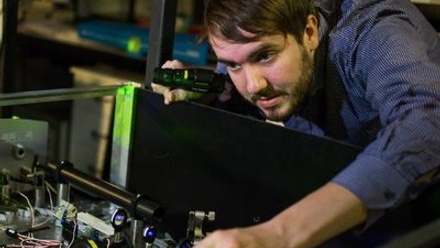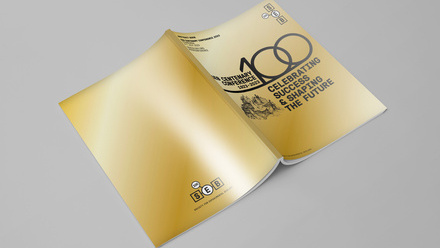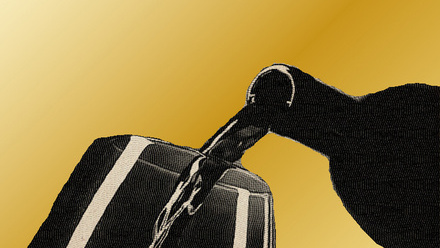Who were the founding members of the SEB?
Introduction
The Society for Experimental Biology (SEB) celebrates its centenary this year. The Society started from humble beginnings with an endowment of £200, around £10,000 in today’s money, and endorsements from iconic people such as the science fiction novelist HG Wells. The SEB was founded by three key figures, Lancelot Hogben, Julian Huxley and Francis Crew. Initially the trio wanted to create a journal featuring experimental biology research. They gathered the input and support of peers, and established the British Journal of Experimental Biology (BJEB), which is now the Journal of Experimental Biology. During a board meeting at Birkbeck College, London, the decision was made to create a Society with the aim of promoting cell, plant and animal research [1, 2]. One hundred years later, the Society has expanded to over 2,500 researchers from across the globe who are involved in 23 interest groups helping to advance cell, plant and animal research.
While the union of these founding members was a pivotal moment in the history of biology, these people also led interesting lives outside work with the SEB. This article will explore their lives as well as their contributions to science.
The founding members of SEB
Lancelot Thomas Hogben
In 1895, Hogben was born two months premature into a Methodist family who saw his survival as a miracle. This led his parents to believe that he should become a medical missionary. After completing his schooling, he managed to gain a scholarship to study physiology at Trinity College, Cambridge. Shortly after gaining his degree, Hogben decided to volunteer in Northern France during WWI as a first aider for the Quakers [3]. Seeing the horrors of war, he became a conscientious objector and failed to do his medical exam after being conscripted. He was subsequently imprisoned for three months, a lenient outcome at the time.
After the war he became a lecturer of zoology at the University of London, where he also gained his doctorate. Whilst he was teaching, the abhorrent eugenics movement of the 1930s was growing. Hogben became an avid objector of this belief that specific traits made some humans more ‘desirable’ and the human population could be improved through selective breeding by actively protesting against the movement. Later, Hogben gained a professorship at McGill University, Canada specialising in linguistics where he developed an artificial language that was formed of 800 words derived from Greek and Latin [3]. In 1936, Hogben was elected Fellow at the Royal Society and Chair of the Zoology at the University of Cape Town for the Principal Evolution Biology Journal. During his time in South Africa, he openly admitted black students into his classes which was considered scandalous at the time as this was during apartheid. In protest with the country’s policy, he returned to the UK and lectured at the London School of Economics and Political Science.
Whilst giving a lecture in Norway the Nazis invaded. To escape he had to use the Trans-Siberian Railway to get a ship to Japan, and then onto the US due to the Nazis blockading the North Sea. After months of travelling, he signed up to help in the war effort by analysing medical statistics to help treat injured soldiers [4]. At this time, he warned governments against the over prescription of antibiotics, a problem that we are still facing today. After the war he was offered a Vice Chancellor position at the newly opened University of Guiana, South America. After several years he retired to Wales. Hogben was most known for writing many popular science books such as ‘A Short Life of Alfred Russel Wallace’ and for making the African Clawed Frog (Xenopus laevis) a model species in zoology.
Julian Sorell Huxley
Huxley was born into a wealthy and influential family. His grandfather, Thomas H Huxley, was the famous biologist, and his brother, Aldous Huxley was the famous writer and philosopher who wrote ‘A Brave New World’. Julian received the best education at Eton College, and then Balliol College in Oxford where he gained his degree [5]. He was then invited to the newly open Rice University in Houston, Texas where he headed biology.
During the outbreak of WWI, he returned to England and signed up to serve in the British Army Intelligence Corps where he was in charge of letter censoring. Huxley moved quickly through the ranks to become a lieutenant. After serving in the army, he returned to academia by becoming a Fellow at New College, Oxford. After some time, he was offered a professorship at King’s College within the Department of Zoology where he also served as Sectary to the Zoological Society of London [5]. During this appointment, Huxley redeveloped Regent’s Park Zoo (now London Zoo) into what it is today, and helped to set up the UK’s largest zoo at Whipsnade. He also opened Europe’s first petting zoo for children, and fast became a prominent fellow at the Royal Society like his grandfather.
With his passion for animals and conservation, Huxley directed an Oscar-winning film ‘The Private Life of the Gannets’ which documented the lives of these seabirds that lived on Grassholm, a small uninhabited island off the coast of Wales. The premise of the story was that man had to live with nature; a pro-environments’ stance which still resonates today.
After WWII, Huxley was invited to become the first Director General of UNSECO (1946-1948). During his tenure he visited many parts of the world advising governments and conservation groups. In 1958, he was knighted by Queen Elizabeth II for his service to zoology. Huxley was an avid supporter of abortion rights and the decriminalisation of homosexuality during the 50s and 60s, which was highly controversial at the time. Throughout this period, he suffered from periodic bouts of depression, which was treated by the now discredited electro-shock therapy [6]. Whilst suffering from depression, Huxley managed to set up the World Wildlife Fund (WWF), which has transformed conservation on a global-scale. Huxley revolutionised embryology, systematics, and the study of behaviour and evolution.
Francis Albert Eley Crew
Crew was born in the sleepy English town of Tipton where he was educated at King Edward VI High School. Crew developed a passion for breeding bantams (miniature chickens), winning many prizes in various poultry shows. Crew then went onto study medicine at Mason College in Birmingham and then at the Medical School in Edinburgh. After graduating he opened a medical practice in North Devon, until the outbreak of WWI where Crew joined the army as a major serving in India and France [7]. He returned to Edinburgh after the war as a research assistant in the Natural History Department.
In 1921, Crew became the Director of the Animal Breeding Research Department (ABRD) in Edinburgh, followed by admission into the Royal Society. Whilst being director he transformed the department moving its home from a dilapidated building into King’s Building, with the help of a large £30,000 grant (£1.4 million in today’s money) from the Rockefeller Foundation. This injection of funding made the ABRD one of the world-leading facility for genetics in the 1930s [8]. During his tenure with the ABRD, he advanced his specialism of intersexuality and sex transformations in domestic birds. As the Second World War began, Crew re-joined the army commanding a Miliary Hospital within the grounds of Edinburgh Castle, and leading the development of new medical techniques for the War Office. As war progressed, he founded the Polish School of Medicine in Edinburgh and trained several hundred Polish doctors to help treat their injured citizens back home. After the war, the Polish Government awarded Crew the Polonia Restituta (highest honour) for his help training so many doctors [7]. Crew also helped to part-edit the official army medical history of the allied forces.
Later in life, Crew moved away from research becoming the chair of Public Health and Social Medicine in Edinburgh, and established the world’s first Teaching Unit for Nurses. Following his retirement in 1955, he was asked to be presentative of the World Health Organisation (WHO) in Egypt to advise the government on matters of medical training [8]. He was also asked by the UK Government to become an advisor to the Central Family Planning Institute in New Delhi. Whilst living in India he established the first genetic diagnostic clinic. Crew laid the foundations for modern medical genetics and reconstructive treatment, he also put Edinburgh on the map for genetic research.
Conclusion
The SEB was founded 100 years ago on the principles of cooperation and a drive to advance biology. The three founding members had some interesting stories to tell. Lancelot Hogben made the African Clawed Frog a model species, wrote many popular science books, and led the way on peace. Julian Huxley transformed British zoos, brought conservation onto the world stage, and was a supporter of equality for women and gay rights. Francis Crew transformed animal genetics in Edinburgh, served in the army to treat injured soldiers, and worked as a medical advisor for WHO.
References
[1] Erlingsson, SJ. (2013). Institutions and innovation: experimental zoology and the creation of the British Journal of Experimental Biology and the Society for Experimental Biology. BJHS. 46: 73–95. DOI: https://doi.org/10.1017/S0007087411000847.
[2] SEB, (2022). SEB History: We have 100 years of history! Read about the SEB foundation and some key facts. https://www.sebiology.org/centenary/seb-history.html.
[3] Wells, FRS. (1975). Lancelot Thomas Hogben. Royal Society: https://royalsocietypublishing.org/doi/pdf/10.1098/rsbm.1978.0007.
[4] Hosch, WL. (2009). Lancet Thomas Hogben. Britannica: https://www.britannica.com/biography/Lancelot-Thomas-Hogben.
[5] Baker, JR. (1976). Julian Sorell Huxley, 22 June 1887 – 14 February 1975. Royal Society: https://royalsocietypublishing.org/doi/10.1098/rsbm.1976.0009.
[6] Cain, J. (2010). Julian Huxley, general biology and the London Zoo, 1935–42. Royal Society: https://royalsocietypublishing.org/doi/full/10.1098/rsnr.2010.0067.
[7] Hogben, LT. (1974). Francis Albert Eley Crew, 1886-1973. Royal Society: https://royalsocietypublishing.org/doi/10.1098/rsbm.1974.0005.
[8] Button, C. (2017). James Cossar Ewart and the Origins of the Animal Breeding Research Department in Edinburgh, 1895–1920. J Hist Biol. 51: 445–477. DOI: https://doi.org/10.1007/s10739-017-9500-0.






